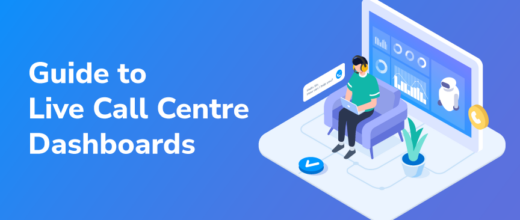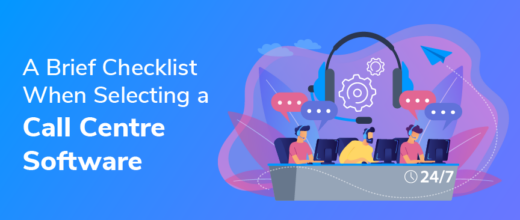Outbound calling is the life and blood of the modern commercial ecosystem. Not only does it open a direct line of communication with the customer but it also gives businesses a human touch. Be it for marketing, data collection, sales or information gathering, outbound calling ensures that the company’s goals and objectives are met credibly.
In fact, with the emergence of cloud telephony, the outbound calling has become all the more efficient. This has further resulted in the inception of numerous outbound calling strategies to save time and resources. Some businesses, however, prefer to use other methods in order to accelerate their performance. One of these is the much-renowned policy of driving inbound calls.
Outbound Calling vs Inbound Calling

An inbound call is the one which comes in from an external source. In methodology, it is the exact opposite of an outbound call.
The clients usually place a call to ask about a product/service, to have a specific problem resolved or to simply know the status of their association with the company. Whatever be the reason, when a client decides to call, the agents should be ready to deal with them. During this dealing, the same principles as that of outbound calling apply.
Though most businesses find outbound calling to be a better option, many others consider inbound calls to be more advantageous. However, what is more likely to reap better results is a fair mixture of inbound-outbound calls.
This is because both of these calling strategies are not mutually exclusive but are in fact complementary. They facilitate B2B/B2C contact and provide a platform on whose basis a long-term relationship can be forged.
Nevertheless, it is important for a business to design an effective outbound calling strategy to ensure that the company’s objectives are met. This entails a complete knowledge about how an outbound call works and what factors determine the success or failure of a call effort.
How to Succeed in Outbound Calling?

In order to succeed in your outbound calling effort, you need to devise a competent outbound calling strategy. This requires you to identify and consider a few elements which will go a long way in ensuring that your calling campaign is fruitful. These are:
*Are the Goals Well-Defined?
Even before the first lead number is dialled, the specific goals of an outbound calling effort need to be defined in detail.
What is the objective of the entire campaign? Is it to boost sales, conduct surveys, market products or is it to simply undertake outbound calling for lead generation?
Who is the target audience? Is it going to be B2B (business-to-business) or B2C (business-to-consumer) interaction?
If it is going to be the former, are the agents aware of what is B2B outbound calling? If it is the latter, what is the exact profile of the consumers one is aiming to connect with?
Answering these questions would ensure that the foundation of the calling strategy is transparently laid. With a clear-cut strategy in place, further processes can be effectively planned and brought to action.
*What Are the Key Performance Indicators?
Key performance indicators are a potent tool to measure the success or failure of a calling strategy. However, it is vital to know that in every outbound call center, performance metrics vary. This is because if one begins to measure every indicator individually, a copious amount of data would be generated, whose analysis will be unmanageable and wasteful.
Though a variety of indicators like occupancy rate, hit rate and calls per record exist, it is the metrics such as:
- First close call
- Conversion rate
- Average handle time
- Call quality analysis
- Abandoned call ratio
All of which provide a reliable picture of how the outbound call campaigns are truly faring.
*Have the Call Lists Been Drawn Up?
Most businesses struggle today because they are acutely unaware of what is outbound cold calling and whether or not it should be deployed as a calling strategy. Cold calling implies trying to solicit business from potential customers without having any idea about what their expressed preferences are.
An outbound calling campaign can only reap good results if it draws up call lists instead of undertaking the tedious process of cold calling. Call lists fundamentally consist of qualified leads who have been profiled on the basis of their needs, geographic location and interests. This facilitates better customer understanding and interaction.
A number of businesses these days also tend to use customer relationship management (CRM) solutions to draw up call lists. This empowers them to focus on prospective clients in a more individualised, concentrated and diligent way.
*Are the Agents Well-Trained?
For a business to know how to succeed in outbound calling, it must first find out if its agents are well-trained. The agents are the first point of contact for a customer and they directly pave a path for long-term customer retention. This is why it must be ensured that the agents are trained to be patient, adaptable, quick, attentive and responsive with the requisite information.
Apart from helping them acquire these skills, an outbound contact center must also provide them with healthy incentives. These can range from small gifts to monthly or quarterly commissions. Providing such rewards would enable the agents to stay motivated and put their abilities to the best use.
Nevertheless, at this juncture, it is vital to know what you must and mustn’t do while placing an outbound call.
How to Start an Outbound Call Successfully- Dos and Don’ts

The defining moment of an effective outbound calling strategy is the actual phone call. After the pre-calling checks have been completed, the agents must walk their way through the outbound call bearing the following in mind:
– Grab Attention
Just as the call begins, the agent must find a way to grab the prospective client’s attention. If the interest of the customer doesn’t pique, they would simply hang up! So, make the best use of personalization, address the customer by their name, show them that you are aware of their current problems and can offer a product/service which can solve them.
– Sound Confident
Confidence is the key which can help an agent gain the customer’s trust. The agent must have researched both the customer and the product extensively before placing the call. Understanding who they are talking to and knowing exactly what they are selling is an instant confidence booster and a trust gainer.
– Offer Value
Provide value to the person who is being spoken to. If it is a potential customer, find out about their preferences beforehand. If it is a business, make efforts to befriend the gatekeeper. Both ways avoid the unnecessary frills and focus on making the conversation worthwhile.
– Mind the Time
Before launching the pitch, ask the customer if it is a good time to call them. If not, schedule a call for when they are available. Being mindful of their time is a great way to build deeper connections. More so, being direct during the call also helps save a lot of time. Trim the edges and be straightforward.
– Listen In
Listening constitutes a pivotal part of good communication. As important as it is to grab the customer’s attention by talking, the agents must also ascertain that they listen in to what the prospect has to say. Listening properly would help avoid presumptive questions and would further encourage meaningful conversations.
– Don’t Commit
While on a call, agents often tend to make unrealistic commitments which they can’t possibly keep. Therefore, it is wise to not make promises which one can’t be too sure about upholding in a short time frame. If a promise is made and not kept, then the customer’s trust is lost forever.
– Follow Up
End the call with a specific time to follow up. Do not settle for a “sometime next week”. Instead, ask the customer if they’d be free to talk on say, next Wednesday at 12 PM. This helps end the conversation on a high note and yet keep the prospect interested. It also displays an agent’s professionalism.
Adhering to these tips would make certain that the outbound call has been appropriately made.
A successful outbound strategy, however, does not end with the call. A consistent tracking and measuring of performance through call quality analysis and CRM software is a must.
Is the Technology up to Date?
For those who wonder how outbound call center works, technology is the one-word answer.
A constant evaluation and upgradation of the technical tools being employed go a long way in bolstering the effectiveness of an outbound calling strategy.
To begin with, a business must make sure that the software it deploys rightly represents their dialling requirements. Moreover, care should be taken to see that it integrates seamlessly with CRM so that the data obtained can be suitably stored.
In other words, to have complete information about how to run outbound call center, a business must be able to utilize technology which is reliable, secure and cost-effective at the same time.
The aforementioned elements must be carefully examined and inculcated in an outbound calling strategy for it to be truly effective. Following them in letter and spirit is the only way for an outbound call center to secure a favourable and sustainable calling outcome.
Nonetheless, it is vital to understand how outbound calling service provides a strong foundation for a business to build upon.
Why Is Outbound Calling Important?
The importance that outbound call campaigns lend to a business, especially those that have a core sales function, is paramount:
– In an era of automation, the chances of clients engaging with a human voice are much higher. A human touch never goes out of fashion and is essentially a powerful way to form connections.
– An outbound contact center supplements the existing marketing efforts. Therefore by hiring remote callers, a lot of resources, especially in terms of time, can be saved.
– Outbound calling is generally focused and targeted. This automatically raises the chances of success as the client database is accurately filtered and profiled against various metrics.
– The outbound call center solutions on the cloud are easy to monitor. Along with the employee performance, they can be tracked and measured, thus initiating a feedback loop.
– If one knows how an outbound call center works, they would be aware that its reach is not limited to a proximal geographic area. The calling effort can exceed physical boundaries, thus enabling agents to reach a greater client base. This makes it much cheaper than the other traditional methods.
An excellent outbound calling strategy can help a business achieve its targets and consequently grow by leaps and bounds.
The Way Forward
With changing times, a variety of marketing tools have begun to throng the horizon. Nonetheless, the significance of outbound calling hasn’t suffered. Owing to the multiple avenues it simultaneously opens, outbound calling will continue to remain an efficient way to ensure that a business gains productivity, reduces cost and ultimately achieves progress.




 +91-8088919888
+91-8088919888 +1-(718) 354-8866
+1-(718) 354-8866 +61-2-8073-0559
+61-2-8073-0559 +62-215-098-4960
+62-215-098-4960 +60-3-2771-2799
+60-3-2771-2799 +65-6951-5460
+65-6951-5460
No Comments